With the progress in civilization, the people of the United States started to move inland into the continent. Gradually, they unveiled natural resources from the vast stretch of land. This led to the necessity of transporting goods from one place to another. In the beginning, steamships were the most used medium of travel. This followed the development of canals, and in the 1830s, the first major railroad construction took place. It led to the introduction of steam run rails which became the most important means of goods transportation.
With the benefit of 150 years of hindsight, we can recognize today that the completion of the Union Pacific Railroad in 1869 was of greater importance to the people of the United States, culturally, socially, and economically, than the inauguration of steamship service across the Atlantic or the laying of the Atlantic Ocean telegraph cable.
In an era of interstate highways and quick air travel, it is difficult to imagine just how isolated those parts of the United States farthest from the oceans were, even as late as the mid-19th century. The most optimistic of our early presidents, Thomas Jefferson, referred to the “immense and trackless deserts” in the Louisiana Purchase. The explorer Zebulon Pike compared these lands to “the sandy wastes of Africa.” Daniel Webster declared Wyoming Territory “not worth a cent,” being “a region of savages, wild beasts, shifting sands, whirlwinds of dust, cactus, and prairie dogs.”
John Stevens was the original pioneer of railroads in America. However, the design work for the railroads started to take place haphazardly all over the continent. There was no supervision, and the construction lacked the basic equipment for placing railroads. In 1843, the rail industry boomed immensely with the completion of the western railroad of Massachusetts. This ensured that more and more agricultural goods, commodities, and other products were transported over long distances at the lowest cost.
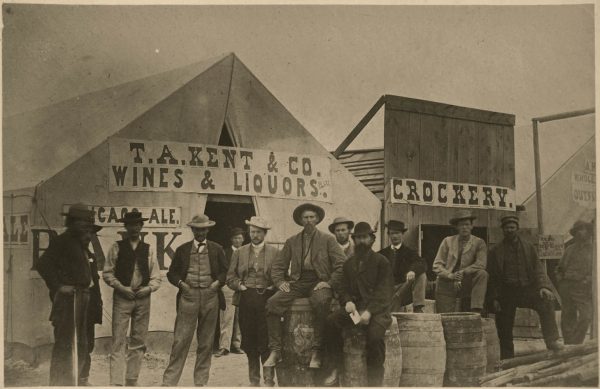 The westward rush of the railroads across the Plains and westward led to an onward march of an interesting social characteristic that gained a special name: “hell on wheels.” More than just a curse or profane expression, “hell on wheels” was a Westernism for a very specific advancement of a very unusual type of a sort of “portable town.”
The westward rush of the railroads across the Plains and westward led to an onward march of an interesting social characteristic that gained a special name: “hell on wheels.” More than just a curse or profane expression, “hell on wheels” was a Westernism for a very specific advancement of a very unusual type of a sort of “portable town.”
The expression “hell on wheels” referred to the motley collection of tents, board shacks, furniture, furnishings, and people moved along by railroad itself ahead of the advancing rail-head and set up near the tracks for the benefit of the railroad workers. This ragged collection of shanties and shady people usually centered around a large tent and included a group of smaller tents and shacks that housed all the gamblers, prostitutes, and fast-money merchants who met the needs of the rail workers and others involved in moving the tracks westward.
Chronology of America’s Freight Railroads
- 1797: The steam locomotive is invented in England.
- 1823: The first public railway in the world opens in England.
- 1827: The first railroad in North America — the Baltimore & Ohio — is chartered by Baltimore merchants.
- 1830: The first regularly-scheduled steam-powered rail passenger service in the U.S. begins operation in South Carolina, utilizing the U.S.-built locomotive The Best Friend of Charleston.
- 1831: U.S. mail is carried on the rails for the first time.
- 1832: The Strasburg Railroad in Pennsylvania is founded. It is still in business and is the oldest continuously operated railroad in the country.
- 1833: Andrew Jackson travels from Baltimore to Ellicott’s Mills, becoming the first sitting U.S. president to ride the rails.
- 1833: Approximately 380 miles of railroad are in operation in the U.S.
- 1838: Five of the six New England states have rail service, as do such frontier states as Kentucky and Indiana.
- 1840: More than 2,800 miles of railroad are in operation in the U.S.
- 1842: Charles Dickens rides the rails while visiting the U.S. to lecture in favor of an international copyright agreement and in opposition to slavery. Comparing U.S. and English railroads, he wrote, “There are no first and second class carriages as with us; but there is a gentleman’s car and a ladies’ car: the main distinction between which is that in the first, everybody smokes; and in the second, nobody does.”
- 1850: More than 9,000 miles of railroad are in operation in the U.S., as much as in the rest of the world combined.
- 1851: First refrigerated railcar known to have been built in the U.S. began service when eight tons of butter were shipped from Ogdensburg, NY, to Boston.
- 1854: Attorney Abraham Lincoln represents the Illinois Central Railroad.
- 1860: More than 30,000 miles of railroad are in operation in the U.S..
- 1860: Chicago, with 11 railroads, had become America’s leading railway center.
- 1862: President Abraham Lincoln formally inaugurates the transcontinental railroad construction that will ultimately link California with the rest of the nation.
- 1861–1865: The Civil War became the first major conflict in which railroads played a major role, as both sides used trains to move troops and supplies.
- 1863: Congress designates 4 feet, 8.5 inches as the gauge for the transcontinental railroad. Eventually, this gauge became the industry standard. Since 1887, nearly all U.S. railroads have been this width.
- 1865: The “golden age” of railroads begins. For nearly half a century, no other mode of transportation challenges railroads. During these years, the rail network grew from 35,000 miles to a peak of around 254,000 miles in 1916.
- 1865: Charles P. Hatch of the Empire Transportation Company invented the railroad tank car. The earliest tank cars were flat cars with wooden tubes mounted on top used to transport several thousand gallons of crude oil. In addition to oil products, early tank cars transported, among other things, pickles in brine and oysters on ice.
- 1866: The first U.S. peace-time train robbery reportedly occurs outside Seymour, Indiana, when two gunmen board an Ohio & Mississippi passenger train traveling between East St. Louis and Cincinnati. They empty one safe, throw another safe overboard, and jump off the train after fooling the engineer into slowing down.
- 1869: On May 10, at Promontory, in the Utah Territory, the “Golden Spike” joined the Union Pacific and Central Pacific railroads, marking the completion of the first transcontinental railroad.
- 1872–1945: Presidents from Ulysses S. Grant to Franklin D. Roosevelt travel largely by train. For them, as for virtually every American, the railroad offers the fastest and safest means of travel.
- 1881: Railroad mileage in the U.S. exceeds 100,000.
- 1893: On May 10, Locomotive No. 999 of the New York Central hits 112.5 miles per hour between Batavia and Buffalo, New York — the first time a train exceeds 100 miles per hour.
- 1900: John Luther Jones, also known as Casey Jones, dies in a train wreck. Jones’s Illinois Central passenger train crashed into the back of a stalled freight train in Vaughan, Mississippi, on the foggy night of April 30.
- 1902: Railroad mileage in the U.S. exceeds 200,000, double what it was just 20 years earlier.
- 1911: Walter Chrysler begins working for the fledgling auto industry. The son of a railroad engineer, Chrysler was a top-notch railroad mechanic and had spent years roaming the West working for various railroads and then for the American Locomotive Company (ALCO).
- 1917: The federal government seizes control of the railroads for the duration of World War I. When they were returned to private ownership in 1920, they were seriously run-down and needed substantial maintenance and improvement.
- 1900–1940: Other modes of transportation grow from small beginnings to challenge rail dominance in freight and passenger transportation. By the eve of World War II, automobiles, large buses, trucks, planes, and pipelines — supported by government subsidies and less burdened by regulation than railroads — became full-fledged competitors to railroads.
- 1926-1929: Future U.S. Supreme Court Justice Thurgood Marshall works as a railroad porter during the summers.
- 1929–1938: The Great Depression forces substantial segments of the rail industry into bankruptcy.
- 1933: Continuous welded rail is laid for the first time in the U.S.. Continuous welded rail eliminates the familiar “clickety-clack” that, although perhaps soothing to rail passengers, represents the gradual wearing down — chip by chip — of the ends of each separate length of rail.
- 1936: The Chicago Great Western Railroad moved several hundred truck trailers on flatcars modified for this purpose. This is the beginning of the intermodal concept as we generally know it today.
- 1941–1945: Railroads remained under private control during World War II and, on average, moved twice the monthly volume of freight and passengers as during World War I. During 45 months of the war, the railroads moved 90% of all Army and Navy freight and more than 97% of all military personnel in organized groups within the U.S. The latter included the operation of nearly 114,000 special troop trains.
- 1945–1970: Railroads enter the post-war era with a new sense of optimism, leading them to invest billions of dollars in new locomotives, freight equipment, and passenger trains. That investment would see the last steam locomotive retirement by the late 1950s in favor of diesel engines. Despite this modernization, the decline in rail market share that began before the war resumed.
- 1945–1953: President Harry S Truman is the last “railroad President.” His successors will rely primarily on planes and automobiles, using trains largely for campaign trips.
- 1955: Intermodal freight — the movement of containers and highway trailers by rail — is reported as a separate category of freight for the first time. In that year, railroads moved 168,000 carloads of trailers and containers.
- 1956: Trucking executive Malcom McLean converts a military tanker into the first marine containership: the Ideal X sailed from New Jersey to Houston with 58 containers on board. McLean’s innovation, which quickly brought huge productivity gains to ocean transportation, is a key technology that makes the globalization of trade possible.
- 1961: Missouri Pacific acquires the rail industry’s first solid-state computer, an IBM 7070. Railroads will become one of the earliest major users of computer technology.
- 1970–1975: Burdened by excessive regulation and faced with heavily subsidized competition, nine Class I railroads, representing almost one-quarter of the industry’s trackage, file for bankruptcy protection.
- 1968: Southern Pacific acquires the rail industry’s first locomotive engineer training simulator.
- 1970: The Rail Passenger Service Act of 1970 creates Amtrak to take over intercity rail passenger service. Amtrak officially began service on May 1, 1971.
- 1970: In June, the giant Penn Central declares bankruptcy. At the time, it was the biggest corporate bankruptcy in U.S. history.
- 1976: The Railroad Revitalization and Regulatory Reform Act created the Consolidated Rail Corp. (Conrail) from six bankrupt Northeast railroads. The legislation also includes regulatory reforms that are supposed to make the rail regulatory system more responsive to changed circumstances.
- 1980: Congress passes the Staggers Rail Act, reducing the Interstate Commerce Commission’s regulatory authority over railroads and sparking competition that stimulates technological advances and a restructuring of the industry, including creating hundreds of new shortline and regional railroads using rail lines spun off from larger railroads.
- 1987: Conrail is privatized in what was the largest share offering in U.S. history at that time. Investors pay $1.9 billion to buy shares in the railroad.
- 1996: After 108 years, the Interstate Commerce Commission goes out of existence and is replaced by the Surface Transportation Board, which assumes responsibility for the remaining regulation of rail rates and services.
- 2004: In a June report, the Federal Railroad Administration (FRA) notes, “By nearly every indicator, long-term safety trends on the nation’s railroads appear very positive. Overall, the safety performance record of the nation’s railroads has been one of continuous improvement.”
- 2006:S. and Canadian railroads move 14.6 million intermodal trailers and containers, an all-time high.
- 2008: In October, Congress passed “The Rail Safety Improvement Act of 2008” (RSIA). The law mandates that Positive Train Control (PTC) be installed by the end of 2015 on railroad main lines used to transport passengers or toxic-by-inhalation (TIH) materials. The deadline is later extended.
- 2008: Coal again becomes the top U.S. rail industry revenue source, overtaking intermodal (which had taken over the top spot in 2003). Class I railroads originate a record 879 million tons of coal.
- 2009: In November, an independent report prepared for the Federal Railroad Administration finds that railroads, on average, are four times more fuel efficient than trucks.
- 2009: The severe recession leads to sharply lower rail traffic. Every major commodity category of rail traffic was down in 2009, most of them sharply.
- 2011: Ethanol carloads on U.S. railroads rise to nearly 341,000, up from fewer than 40,000 in 2000. In 2011, ethanol accounted for 1.2% of total U.S. rail carloads, up from 0.1% in 2000. Railroads account for approximately two-thirds of ethanol movements.
- 2012: Amtrak ridership and ticket revenue set records for the Thanksgiving period. Amtrak carried a record 737,537 passengers during Thanksgiving 2012, up 1.9% over the previous year and the prior record set in 2011.
- 2013: Intermodal revenue (approximately $15.0 billion) surpasses coal ($14.3 billion) as the top source of U.S. freight rail industry revenue.
- 2014: Class I railroads originate more than 493,000 carloads of crude oil, up from 9,500 in 2008, 29,600 in 2010 and 234,000 in 2012. By serving almost every refinery in the U.S. and Canada, railroads offer market participants enormous flexibility to shift products quickly to different places in response to market needs and price opportunities.
- 2015: S. freight railroads spend $30.3 billion — more than ever before — to build and maintain locomotives, freight cars, tracks, bridges, tunnels and other infrastructure and equipment. America’s freight railroads operate almost exclusively on infrastructure they own, build, maintain, and pay for themselves. By contrast, trucks, airlines, and barges operate on highways, airways, and waterways that are overwhelmingly publicly financed.
- 2017: Class I railroads terminate 208,036 carloads of crude oil, down from a peak of 540,383 in 2014. The decline is due largely to the construction of many new crude oil pipelines.
- 2018: S. railroads originate 14.5 million intermodal containers and trailers, setting a new annual record. In 1990, containers accounted for 44% of intermodal traffic. By 2000, the share was 69%. In 2018, it was 91%. Containers are generally more efficient than trailers because they can be “double-stacked.”
- 2018: A study from Towson University’s Regional Economic Studies Institute found that, in 2017 alone, the operations and capital investment of America’s major freight railroads supported approximately 1.1 million jobs (nearly eight jobs for every railroad job), nearly $219 billion in economic output, and $71 billion in wages. Railroads also generated nearly $26 billion in tax revenues. In addition, millions of Americans work in industries that are more competitive in the tough global economy thanks to the affordability and productivity of America’s freight railroads.
- 2019: Class I railroads originate 471 million tons of coal, down 46% from 2008’s peak of 879 million tons. Coal accounted for 23% of U.S. electricity generation in 2019, down from 50% in 2005 and 45% in 2010.
- 2019: Class I railroads pay $1.4 billion in state and local property taxes, double what they paid ten years earlier. Unlike trucks and barges, railroads pay property taxes on their infrastructure. In many states, railroads also pay taxes on the value of their freight cars.
- 2020: October marks the 40th anniversary of the Staggers Rail Act of 1980. The global superiority of U.S. railroads is a direct result of the deregulatory reforms embodied in the Staggers Act. Deregulation allowed railroads to improve their financial performance from anemic levels before Staggers to more moderate levels, allowing them to plow back hundreds of billions of dollars into their infrastructure and equipment.
- 2020: Class I railroads move a ton of freight 487 miles, on average, per gallon of fuel consumed — roughly the distance from Washington, DC to Dayton, OH or Chicago, IL to Pittsburgh, PA. From 1980 through 2020, U.S. freight railroads consumed 95 billion fewer gallons of fuel and emitted more than a billion fewer tons of carbon dioxide than they would have if their fuel efficiency had not improved.
- 2020: Freight railroads adapt to the COVID-19 pandemic to safeguard employees while ensuring the continued flow of critical goods the nation relies on.
- 2020: Between 2000 and 2021, the train accident was down 33%; between 2000 and 2020, the hazmat accident rate was down 60%. The rail employee injury rate in 2020 was an all-time low.
- 2020: Thanks to the relentless dedication of freight rail employees, Class I railroads successfully met the congressionally mandated deadline to have Positive Train Control (PTC) fully operable by the end of 2020. Today, PTC is fully implemented and in operation on 100% of Class I PTC route-miles network-wide.
- 2020: Since the Staggers Act was passed in 1980, average rail rates adjusted for inflation have fallen 44%. This means the average rail shipper can move much more freight for about the same price it paid more than 40 years ago.
- 2021: Powered by ongoing investments, railroads continue to be the most fuel-efficient way to move freight over land, moving one ton of freight nearly 500 miles per gallon of fuel, on average. Freight railroads propose solutions to policymakers to help continue to combat climate change.
Source: Association of American Railroads
Photos: Jim Maurer
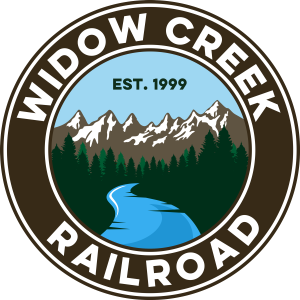

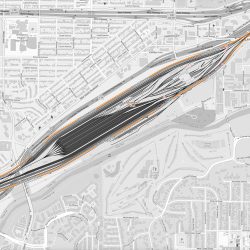

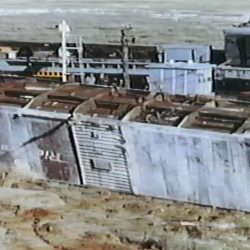
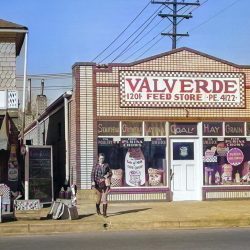
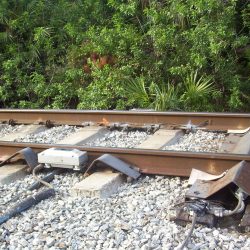

Very nice post. I definitely appreciate this site. Stick with it!